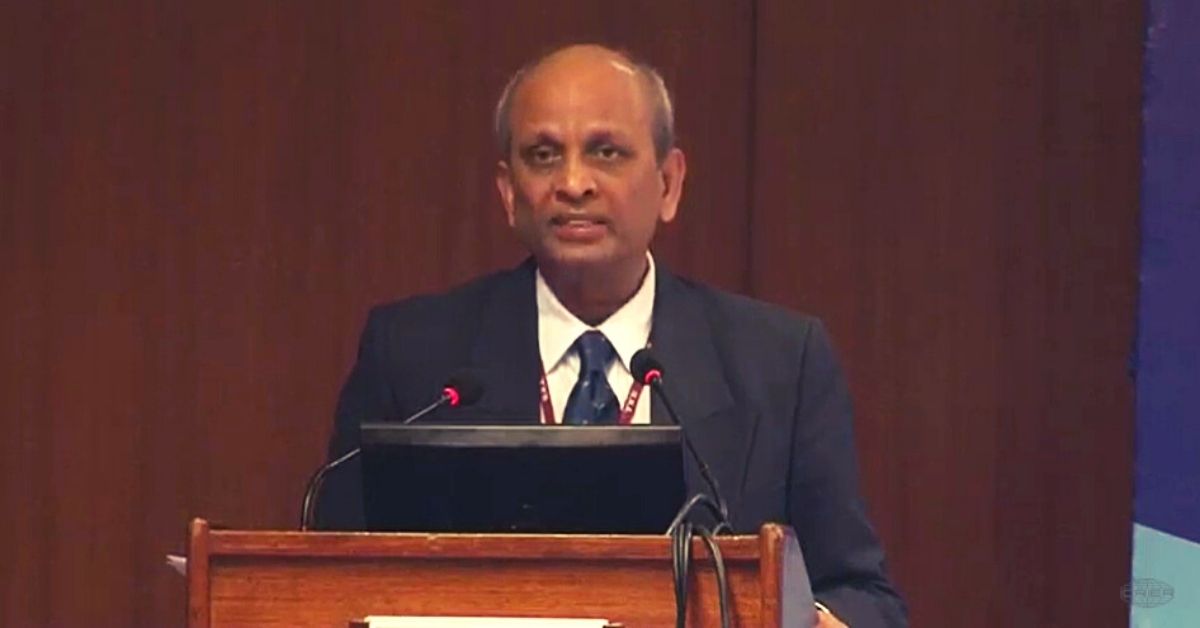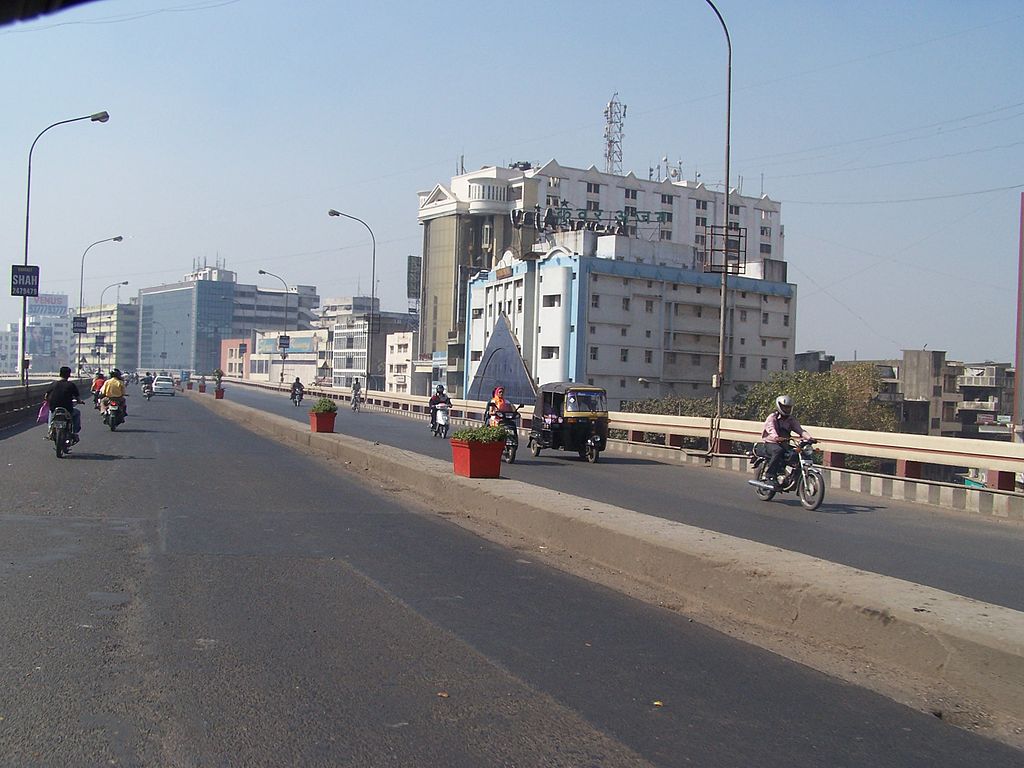How a Determined IAS Officer Transformed Surat Forever After a Deadly Plague
Surat is the second cleanest city in India today and a lot of the credit goes to the revolutionary changes former Surat Municipal Commissioner SR Rao instituted during his brief tenure in the mid-1990s.

The second half of September 1994 was an inflection point for Surat, an industrial hub for textiles and diamond-cutting units in Gujarat, which till this day attracts migrants from all over the country in search of work. It was a time when this commercial city was devastated by the pneumonic plague, a severe lung infection caused by the bacterium Yersinia pestis which can spread from one person to another through the air.
This particular bacteria “is transmitted to humans through the bites of fleas that have previously fed on infected animals” such as rats and other animals, according to a Mayo Clinic explainer. Although a government-appointed investigation committee observed that the source of this outbreak was “ecological disturbances” caused by the earthquake in Latur, Maharashtra, a year earlier, conditions in Surat were extremely ripe for its spread.
Back in September 1994, only a third of the city was covered by drainage systems, piped drinking water and a working system of garbage collection.
Add heavy rainfall, flooding, overflowing garbage, carcasses of dead rats and no semblance of preventive action by the city’s municipal authorities to the mix and what you have is a city extremely vulnerable to any disease outbreaks. The city was already witness to regular outbreaks of dengue, malaria and cholera, amongst others, and those worst affected by this state of affairs were slum dwellers.
Although the actual death toll from the pneumonic plague by some estimates stood at 56, it created mass panic among the city’s residents with reports of people hoarding tetracycline, an antibiotic used to treat a variety of infections, and clean water.
By some estimates, nearly 60% of the city’s population left the city in the span of days. The city’s reputation as a business hub was in tatters and wherever its residents had fled to, they were considered pariahs with misinformation rife about the nature of the outbreak.
Two years later, however, the Indian National Trust for Architectural and Cultural Heritage (INTACH) declared Surat as the second cleanest city in India after Chandigarh.
Wait, how did that happen? The answer lies in the efforts of Suryadevara Ramachandra Rao, a 1978-batch officer of the Indian Administrative Service popularly known as ‘Rao Saheb’, who in 1995 was posted as the city’s municipal commissioner.
Here’s how one man changed the face of the city, transformed the mindset of its residents and created a legacy of excellence in urban governance.

Pressure From The Word Go!
Upon taking office on 3 May 1995, the pressure was on for Rao. Speaking to Outlook magazine in 1996, he said, “Bureaucratically, it was a suicide posting. I had little option but to clean up the city on war footing.” His primary task was to prevent a recurrence of an epidemic and even if there was a minor outbreak, he would have to take the fall.
The first thing he did was work towards restoring the residents’ faith in the Surat Municipal Corporation. To achieve this objective, he embarked on an operation which he called “AC to DC”, which meant getting his officers out of their air-conditioned (AC) offices to fulfil their daily chores (DC). Starting at 7am each morning, officers from all six zones of Surat would get onto the streets and supervise the work done by sanitation workers on the streets.
“Apart from a feeling of camaraderie amongst my colleagues, this also helped us gain field reality: a sweeper can’t ask a millionaire to remove the car hiding garbage or a hotel owner not to throw foodstuff on the roads,” Rao told Outlook.
The next order of business was pulling down unauthorised structures and illegal encroachments driven by the city’s wealthier residents. Most of these authorised structures and illegal encroachments came up because the wealthy had no regard for civic norms and instead saw this as a way of making a quick buck.
Setting a Marker
Following the rule book, he began taking these illegally-built structures one after another after giving owners advanced notice. Despite threats to his life and pressure from local politicians and their cronies, the science graduate from Vijayawada, Andhra Pradesh, never wavered from his objective. In fact, one of the first illegal structures he took down belonged to a powerful local MLA who surrounded himself with armed thugs.
This set a marker for what was to come later.
Another similar step he took was directing his officers to get residents who owed the city more than Rs 1 lakh in municipal taxes to pay up. Little surprise that during his tenure the city ranked first in the state when it came to the recovery of taxes and octroi collection. By whipping the city’s finances into shape, the city was able to significantly improve tax collections that in turn were spent on infrastructure projects.
By targeting the wealthy, who had flouted rules for years, what Rao achieved was compliance from smaller shops, residential societies and even religious institutions like temples and mosques.
They readily agreed to take down encroachments they had made and dismantle illegal structures, which allowed authorities to widen the roads and improve living standards. A rule he introduced to contractors and builders in the state was that if a construction project cannot be undertaken within a span of six months, they would have to offer a written explanation “typed in single-space in six full scape sheets”.
Contractors and builders found it easier to fulfil the task of completing a construction project in six months instead of offering a written explanation. By shortening the time lag between planning and executing these works, he reduced the scope of corruption considerably. Infrastructure projects commenced by the municipal corporation, which would earlier take years and incur cost-overruns were now being finished within months at cheaper rates with Rao instituting unit rates for specified projects undertaken by the municipal corporation.
This also reduced the scope for corruption. Deadlines for capital-intensive projects like constructing a bridge were halved. Subsequently, the corporation took on the task of covering open drains, establishing pay-and-use toilets in slums and markets, and heavy fines imposed on those who wantonly littered. To ensure these directives were taken seriously, he held daily review meetings to discuss the progress made and come up with new plans.

A City Falling in Line
The residents now knew that he played no favourites. Of course, assistance came from the local press, which had long lambasted the Surat Municipal Corporation for its inefficiencies. Now, they had taken notice of this IAS officer and performed the task of informing the local public about his work.
Officers in the municipal corporation who couldn’t get with the programme offered their resignations and this helped weed out a lot of corrupt elements. Those found skipping their duties were asked to resign and along these lines, disciplinary action was taken against 1,200 people employed by the corporation from senior officers to sweepers.
According to this India Today report, “People were asked to deposit their refuse at fixed collection spots and encouraged to report official negligence. Supervisors who failed to address a complaint within 24 hours were instantly chargesheeted. And nearly 35,000 citizens were sent warning notes for sanitation offences.”
Overall, according to Outlook in 1996, “The gutters have been cleaned and covered. Roads and streets have been broadened and paved all over—in the residential areas, the shopping centres and even the red light street close to the Surat municipal office itself. If nature has burdened Surat with black dust in profusion, Rao has given the city its streets free of junk and garbage, its slums pay-and-use Sulabh toilets and a cleaner environment, its shops mandatory dustbins and penalty, also known as ‘administrative charges’, for default.”
All of this was achieved because Rao instituted a system in place. In a conversation with Citizen Matters, Ashwin Mehta, a former colleague of Rao, talked about how earlier the local administration would function depending on the commissioner of the day.
“But after Rao, a system was put in place and every new incumbent had to abide by it. And the first thing Rao did was to ensure that the people believed that a municipal corporation exists and works for them. A complaint redressal system was brought in where responsibilities were fixed and grievance-wise targets were decided. For instance, if there is a grievance about cleanliness, the chief sanitation inspector’s accountability was fixed. Then a grievance card was created where the citizen would fill in his issue at any civic centre and it would be directed to the officer concerned and a copy would also be marked to the complainant,” he said.
Rao’s tenure as municipal commissioner came to an end on 8 December 1997, but not before he began implementing solid waste management strategies which finally took shape in 2004. Experts have argued how these measures were ahead of their time.
Of course, there were critics who felt that he took a high-handed approach to fulfil his goals. According to the India Today report cited earlier, it read, “When municipal laws forbade him from fining citizens for litter, Rao imposed an ‘administration charge’’ for ‘nuisance’.”
Nonetheless, the legacy he left behind is unquestionable. As per the rankings published by Swachh Survekshan, an annual cleanliness survey published by the Centre, in August 2020, Surat was ranked second cleanest city in India after Indore in Madhya Pradesh. Yes, nearly 24 years have passed since the Padma Shri awardee’s tenure as Surat municipal commissioner came to an end. But the systems he put in place all those years ago is what allowed his successors to do their jobs with better efficiency than most cities in India.
(Edited by Yoshita Rao)
Like this story? Or have something to share? Write to us: [email protected], or connect with us on Facebook and Twitter.
This story made me
-
97
-
121
-
89
-
167
Tell Us More
We bring stories straight from the heart of India, to inspire millions and create a wave of impact. Our positive movement is growing bigger everyday, and we would love for you to join it.
Please contribute whatever you can, every little penny helps our team in bringing you more stories that support dreams and spread hope.



















